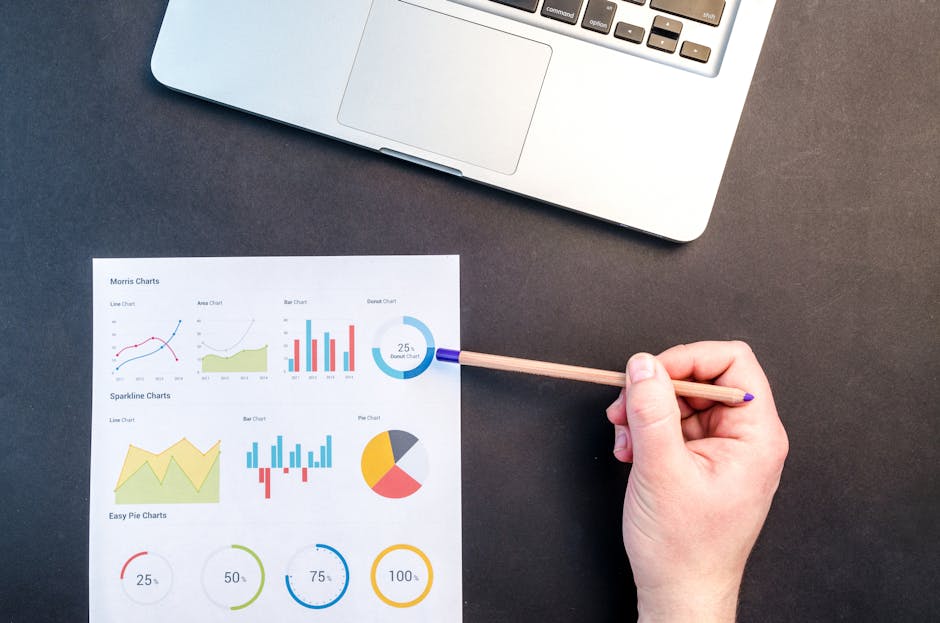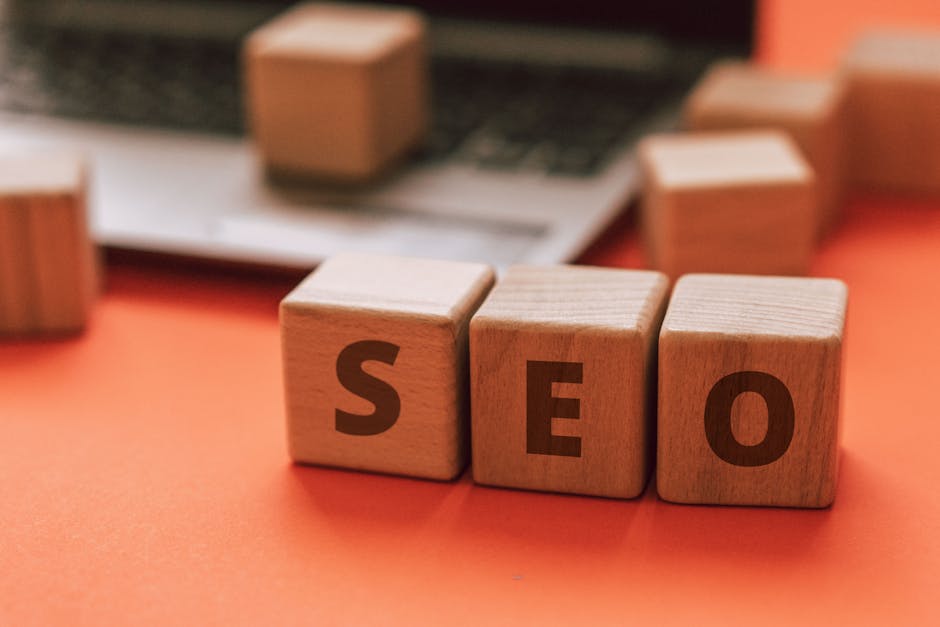Why On-Page SEO Matters
On-page SEO is crucial for optimizing your web pages to rank higher on search engines and attract more organic traffic. It’s about making sure your website’s content and structure appeal to both search engines and users. Here’s a quick answer if you’re pressed for time:
- Include target keywords in strategic places.
- Write compelling title tags and meta descriptions.
- Optimize your URLs, headings, and images.
These steps will make your website more visible and engaging, resulting in higher rankings and more traffic.
I’m Danielle Birriel, founder of D&D SEO Services, with over a decade of experience in SEO, SEM, and digital marketing. My passion lies in empowering local businesses with effective on-page SEO strategies to boost their online presence.
Day 1: Conduct a Content Audit
Before diving into on-page SEO optimizations, it’s crucial to know what you’re working with. That’s where a content audit comes in. Think of it as a health check-up for your website’s content.
Why Conduct a Content Audit?
A content audit helps you identify strengths and weaknesses in your existing content. It ensures your content aligns with the search intent of your audience and adheres to Google’s E-A-T (Expertise, Authoritativeness, Trustworthiness) guidelines.
Steps to Conduct a Content Audit
- Gather Your Content Data
Use tools like Google Analytics to export all your website’s URLs, page titles, and meta descriptions into a spreadsheet. This gives you a bird’s-eye view of your content. - Assess Content Quality
Identify which pages are performing well and which aren’t. Look for high bounce rates, low engagement, or outdated information. High-quality content should be thorough, clear, and error-free. - Check for E-A-T Compliance
Ensure your content demonstrates expertise, authority, and trustworthiness. This is especially important for YMYL (Your Money or Your Life) topics like finance and health. Include author bios and expert quotes to bolster credibility. - Analyze User Intent
Make sure your content matches what users are searching for. If someone is looking for “how to make espresso,” your page should provide a clear, step-by-step guide. - Perform Keyword Research
Identify relevant keywords that your target audience is searching for. Aim for a mix of primary and long-tail keywords to capture a broad audience.
Real-World Example
Let’s say you have a blog about coffee. During your content audit, you find that your article on “how to brew espresso” ranks for 712 keywords, but it lacks information on “the best coffee beans for espresso.” Adding this section can help you rank for additional keywords and improve your overall ranking.
Quick Tips
- Use Descriptive Filenames: Rename images from IMG_1234.jpg to something like coffee-beans.jpg to help Google understand the content better.
- Update Meta Descriptions: Ensure they are compelling and include your target keywords.
- Remove or Update Outdated Content: If a page is no longer relevant, either update it or remove it to improve overall site quality.
By conducting a thorough content audit, you’ll set a solid foundation for the rest of your on-page SEO efforts. Up next, we’ll dive into optimizing your title tags and meta descriptions.
Day 2: Optimize Title Tags and Meta Descriptions
Title Tags
Title tags are one of the most important elements for on-page SEO. They tell both search engines and users what your page is about. A well-crafted title tag can significantly boost your click-through rate (CTR) and help improve your search rankings.
Best Practices for Title Tags:
- Include Target Keywords: Your primary keyword should be in the title tag. This helps search engines understand the topic of your page.
- Keep It Brief: Aim for 50-60 characters to ensure it displays fully in search results.
- Make It Unique: Each page should have a unique title tag to avoid confusion.
- Be Compelling: Use words that entice users to click. Think of your title tag as a mini-advertisement.
Example:
If your target keyword is “custom software development,” a good title tag could be:
“Custom Software Development Services | Fast & Reliable Solutions”
Real-World Impact:
A small change in the title tag can have a big impact. For instance, Ahrefs saw one of their blog posts climb 7 places in search results after changing just one word in the title.
Meta Descriptions
Meta descriptions are the brief summaries that appear under your title tag in search results. While they don’t directly influence rankings, they are crucial for improving your CTR.
Best Practices for Meta Descriptions:
- Include Target Keywords: This helps users see that your page is relevant to their search.
- Keep It Under 160 Characters: Google truncates longer descriptions, especially on mobile.
- Use Active Voice: Make your descriptions clear and engaging.
- Add a Call to Action (CTA): Encourage users to click with phrases like “Learn more” or “Get started.”
Example:
For the same custom software development page, a good meta description could be:
“Find our custom software development services. Fast, reliable solutions custom to your needs. Get started today!”
Why This Matters
Optimizing your title tags and meta descriptions aligns your content with search intent. When users see that your page matches what they’re looking for, they’re more likely to click, which boosts your CTR and can improve your rankings over time.
By focusing on these elements, you can make your pages more attractive to both users and search engines.
Day 3: Improve Content Structure
Improving your content structure is key to making your web pages easy to read and understand. This helps both users and search engines steer your content efficiently.
Use Headings and Subheadings
Headings and subheadings organize your content into manageable sections. This makes it easier for readers to scan and find the information they need.
H1 Tags
The H1 tag is the main heading of your page. It should clearly describe the page’s topic. For example, the H1 for this article is “How to Improve Your On-Page SEO in 7 Days.”
Tips for H1 Tags:
– Use only one H1 tag per page.
– Include your target keyword naturally.
– Make it descriptive and compelling.
H2 and H3 Tags
H2 tags are used for main subheadings, while H3 tags are for subsections within those H2s. This hierarchy helps break down your content into digestible chunks.
Example:
“`html
How to Improve Your On-Page SEO in 7 Days
Day 1: Conduct a Content Audit
What to Look For
Tools to Use
“`
Tips for H2 and H3 Tags:
– Use H2 tags for primary sections.
– Use H3 tags for subsections.
– Include relevant keywords but avoid keyword stuffing.
Improve Readability
Readable content keeps users engaged and reduces bounce rates. Here are some tips to improve readability:
- Use short sentences and paragraphs.
- Avoid jargon and keep your language simple.
- Use bullet points or numbered lists to break up text.
- Add images to illustrate your points.
Improve User Experience
A good user experience (UX) keeps visitors on your site longer and encourages them to explore more pages.
Tips for Better UX:
– Ensure fast loading times.
– Make your site mobile-friendly.
– Use clear and concise language.
– Provide easy navigation with internal links.
Real-World Example
A case study by HubSpot showed that organizing content with headings and subheadings improved user engagement by 20%. Users found the information they needed faster, leading to longer time on page and lower bounce rates.
By improving your content structure, you’ll improve both readability and user experience, making your pages more appealing to both humans and search engines.
Next, we’ll dive into how to improve your URL structure for better SEO.
Day 4: Improve URL Structure
Improving your URL structure is a key step in on-page SEO. A clean, simple URL helps both users and search engines understand what your page is about. Let’s dive into how you can optimize your URLs.
Simple URLs
Google recommends using simple URLs that are easy to read. A simple URL looks like this:
www.example.com/seo-tips
This is much better than a complex URL full of numbers and symbols:
www.example.com/123456?=SEO&tips
Target Keywords
Including your target keywords in your URL can help search engines understand the content of your page. For example, if your page is about “on-page SEO,” your URL should look something like this:
www.example.com/on-page-seo
This helps Google and other search engines to quickly grasp what your page is about and match it to relevant search queries.
URL Optimization
Optimizing your URL involves making it short and descriptive. Avoid using unnecessary words or characters. Here are some tips:
- Include your target keyword: As mentioned, this helps with relevance.
- Remove stop words: Words like “and,” “or,” “but” can usually be omitted.
- Use hyphens to separate words: This makes your URL more readable.
For example:
www.example.com/improve-url-structure
User-Friendly URLs
User-friendly URLs are easy for people to read and remember. They provide a clear indication of the page’s content. Avoid using dates or random strings of characters. Here’s a good example:
www.example.com/blog/seo-basics
This URL tells the user exactly what to expect when they click on it.
Real-World Example
A study by HubSpot found that optimizing URLs increased organic traffic by 10%. Users were more likely to click on URLs that were easy to read and understand.
By improving your URL structure, you not only make your website more user-friendly but also give search engines a better understanding of your content. This can lead to higher rankings and more organic traffic.
Next, we’ll explore how to add and optimize images for better SEO.
Day 5: Add and Optimize Images
Images can greatly improve your content, making it more engaging and informative. But to fully benefit from them, you need to optimize them for on-page SEO. Here’s how to do it:
Image Optimization
Optimizing images helps your site load faster and rank better in search engines. Here are the key steps:
Alt Text
Alt text (alternative text) describes an image to search engines and users who cannot see it. This helps with accessibility and SEO.
Tips for Writing Alt Text:
– Keep it brief: Screen readers stop reading alt text after about 125 characters.
– Include a target keyword: Add your target keyword for context, but avoid keyword stuffing.
– Be descriptive: Describe the image accurately and concisely.
– Skip decorative images: No need to add alt text to purely decorative images.
Example: For an image of blue running shoes, use alt text like “blue running shoes for men.”
Descriptive File Names
Before uploading an image, rename the file with descriptive keywords. This helps search engines understand the image content.
Example:
– Instead of IMG_12345.jpg, use blue-running-shoes.jpg.
Image Compression
Large image files can slow down your site, affecting both user experience and SEO. Compressing images reduces file size without losing quality.
Tools for Compression:
– ImageOptim
– TinyPNG
Lazy Loading
Lazy loading defers the loading of images until they are needed. This improves initial load times and overall page speed.
How to Enable Lazy Loading:
– Use plugins like Lazy Load for WordPress.
– Add the loading="lazy" attribute to your image tags in HTML.
Example:
html
<img src="blue-running-shoes.jpg" alt="blue running shoes for men" loading="lazy">
Real-World Example
A study by HubSpot found that pages with optimized images had a 20% higher chance of ranking on the first page of Google. This shows how crucial image optimization is for on-page SEO.
By following these steps, you’ll not only make your images more accessible and faster to load but also improve your site’s SEO performance.
Next, we’ll look at how to use internal and external linking to improve your on-page SEO.
Day 6: Internal and External Linking
Internal Links
Internal links are links that connect one page of your website to another. They help search engines understand the structure of your site and the relationship between pages.
Benefits of Internal Linking:
- Improves Navigation: Internal links make it easier for visitors to steer your site and find related content.
- Distributes Link Equity: They help distribute “link juice” (ranking power) across your site, boosting the SEO of linked pages.
- Encourages Longer Visits: By guiding users to more content, you keep them on your site longer, which can reduce bounce rates.
How to Add Internal Links:
- Identify Relevant Anchor Text: Choose anchor text that is descriptive and relevant to the linked page’s content.
- Select Target Pages: Link to pages that provide additional value or information related to the current content.
- Strategic Placement: Place links where they naturally fit in the context of your content. Aim for a reasonable number of links per page.
External Links
External links are links that point from your site to another website. They can improve your site’s credibility and authority.
Benefits of External Linking:
- Builds Trust: Linking to authoritative sources can boost your site’s credibility.
- Improves SEO: Search engines view external links to reputable sites as a sign of quality content.
- Provides Value: External links can provide additional information and context for your readers.
How to Add External Links:
- Choose Authoritative Sources: Link to reputable sites with high domain authority.
- Relevant Content: Ensure the linked content is directly related to your topic.
- Monitor Links: Regularly check for broken links and update them.
Anchor Text
Anchor text is the clickable text in a hyperlink. It should be relevant to the linked page and provide context for both users and search engines.
Best Practices for Anchor Text:
- Be Descriptive: Use text that accurately describes the content of the linked page.
- Avoid Keyword Stuffing: Use keywords naturally and avoid overloading your anchor text with them.
- Keep it Short: Aim for concise and clear anchor text.
Site Navigation
Good site navigation is crucial for both user experience and SEO. It helps visitors find what they’re looking for and allows search engines to crawl your site more efficiently.
Improving Site Navigation:
- Clear Menu Structure: Use a simple and intuitive menu structure.
- Breadcrumbs: Implement breadcrumbs to show users their location within your site.
- Consistent Layout: Keep the navigation layout consistent across all pages.
Day 7: Boost Page Speed and Mobile Responsiveness
Why Page Speed Matters
Page speed is crucial for on-page SEO. If your site takes too long to load, visitors will leave. Google knows this and uses page speed as a ranking factor. Faster pages offer a better user experience and can lead to higher conversions.
Here’s a simple way to think about it:
“A slow site is like a slow waiter—people will leave before they even get seated.”
How to Check Your Page Speed
Use Google PageSpeed Insights to see how fast your pages load. This free tool gives you a score and specific recommendations to improve your site speed.
Here’s what you might see:
Quick Tips to Improve Page Speed
- Optimize Images: Compress images to reduce file size without losing quality. Tools like TinyPNG can help.
- Minimize Plugins: Only keep essential plugins. Too many can slow down your site.
- Enable Browser Caching: Store static files so they load faster for returning visitors.
- Streamline Code: Minify CSS, JavaScript, and HTML to reduce file sizes.
Mobile Responsiveness
With more people using mobile devices, your site must be mobile-friendly. Google uses mobile-first indexing, meaning it primarily uses the mobile version of your site for ranking and indexing.
How to Check Mobile Friendliness
Use Google’s Mobile-Friendly Test to see if your site works well on mobile devices. This tool will point out any issues and suggest fixes.
Steps to Improve Mobile Responsiveness
- Responsive Design: Use a responsive design that adjusts to different screen sizes. This ensures a seamless experience across devices.
- Optimize Fonts and Buttons: Make sure text is readable and buttons are easy to click on mobile devices.
- Simplify Navigation: Keep menus simple and easy to use on small screens.
Core Web Vitals
Core Web Vitals are metrics that measure user experience, focusing on loading, interactivity, and visual stability. Google uses these metrics to rank pages.
Key Metrics:
- Largest Contentful Paint (LCP): Measures loading performance. Aim for LCP to occur within 2.5 seconds.
- First Input Delay (FID): Measures interactivity. Aim for FID to be less than 100 milliseconds.
- Cumulative Layout Shift (CLS): Measures visual stability. Aim for CLS to be less than 0.1.
How to Improve Core Web Vitals
- Optimize Server Response Time: A fast server reduces loading time.
- Defer Non-Critical JavaScript: Load essential scripts first.
- Use a Content Delivery Network (CDN): Distribute your content to servers closer to your users.
By focusing on page speed and mobile responsiveness, you’ll improve user experience and improve your site’s SEO performance.
Next, we’ll answer some frequently asked questions about on-page SEO.
Frequently Asked Questions about On-Page SEO
What is on-page SEO?
On-page SEO, also known as on-site SEO, is the practice of optimizing individual webpages to rank higher in search engines and drive more organic traffic. This involves tweaking both the content and HTML source code of a page.
Imagine you have a bakery. Your on-page SEO would be like arranging your cakes and bread in the best way possible, so customers can easily find and buy them. Similarly, on-page SEO helps search engines understand your content better and serve it to users who are looking for it.
What are the key factors of on-page SEO?
To get the best results from on-page SEO, focus on these key factors:
- Content: Create high-quality, relevant content that answers user queries. Google loves content that is informative and useful.
- Keywords: Use target keywords naturally within your content. Avoid keyword stuffing. Tools like the Keyword Magic Tool can help you find the right keywords.
- HTML Elements: Optimize title tags, meta descriptions, and headers. These elements help search engines understand what your page is about. For example, use
for main headings and
,
for subheadings.
- Site Performance: Ensure your website loads quickly and runs smoothly. Slow sites can frustrate users and lower your rankings. Tools like Google PageSpeed Insights can help you measure and improve site speed.
- User Experience: Make your site easy to steer. Good user experience keeps visitors on your site longer, which can improve your rankings.
How does on-page SEO differ from off-page SEO?
On-page SEO focuses on optimizing elements within your own website, like content, keywords, and HTML tags. You have full control over these factors.
Off-page SEO, on the other hand, involves activities outside your website to improve its rankings. This includes building backlinks from other websites, social media marketing, and public relations.
Think of on-page SEO as setting up your store and off-page SEO as getting people to talk about it. Both are crucial for a successful SEO strategy.
By understanding these key aspects, you can make informed decisions to improve your website’s visibility and user experience. Up next, we’ll discuss how D&D SEO Services can help you with personalized strategies to boost your online presence.
Conclusion
At D&D SEO Services, we understand that every business is unique. That’s why we offer personalized strategies custom to fit your specific needs. Whether you’re a local business looking to increase your online visibility or a larger company aiming for robust growth, our team has you covered.
Local SEO
Local SEO is more important than ever. According to our research, 97% of search engine users search online to find a local business. Our strategies are designed to help you dominate those local search results, ensuring that your business is easily found by potential customers in your area. From optimizing your Google Business Profile to building local citations, we make sure your business stands out.
AI-Driven Solutions
We leverage AI-driven solutions to analyze data and provide actionable insights. This helps us to continuously refine and optimize your on-page SEO strategies. By integrating tools like Google Analytics and VWO’s heatmap generator, we track user behavior to understand what works and what doesn’t. This data-driven approach allows us to make informed decisions that improve your online presence.
Online Visibility
Good online visibility is crucial for any business. Our team uses cutting-edge optimization techniques to improve your website’s performance. By focusing on both short-term wins and long-term strategies, we ensure that every aspect of your digital presence is fine-tuned for success. Whether it’s through optimizing your website for conversions or implementing effective content marketing, we aim to drive business growth for our clients.
Why Choose D&D SEO Services?
With over a decade of specialization in SEO and digital marketing, D&D SEO Services stands as a trusted partner for businesses looking to lift their online presence. Our comprehensive approach ensures that you not only reach your target audience but also engage and convert them.
Ready to open up the power of optimization techniques for your business? Contact us today to get started on your journey to online success!
By integrating these strategies, we help you create a stronger digital narrative that resonates with your audience, fostering growth and sustained customer relationships.








